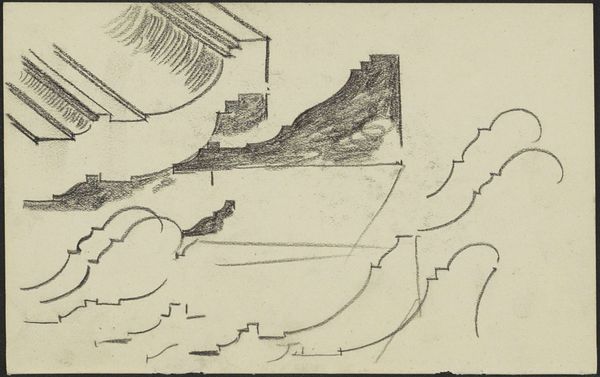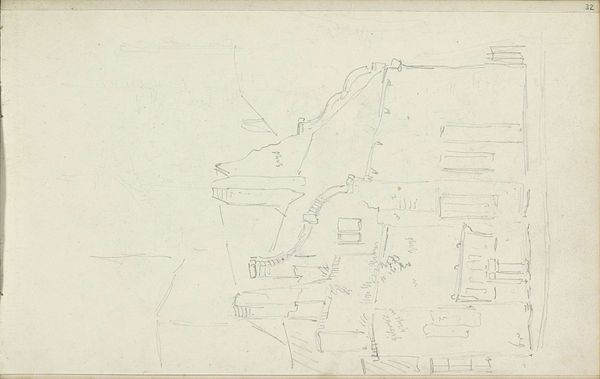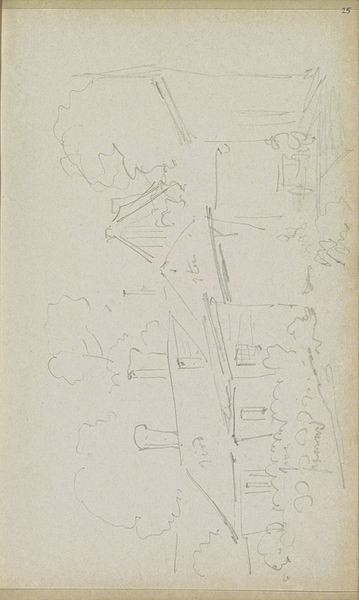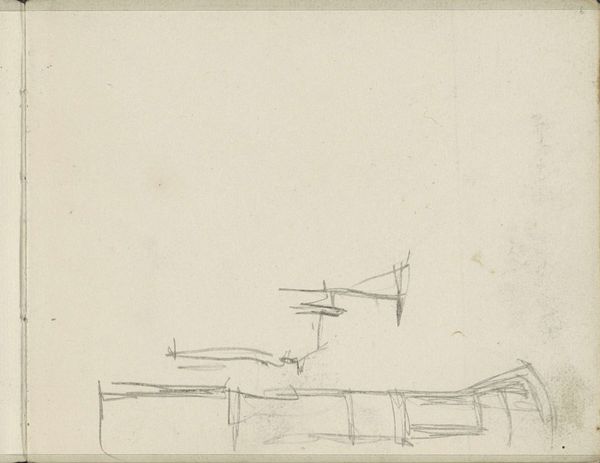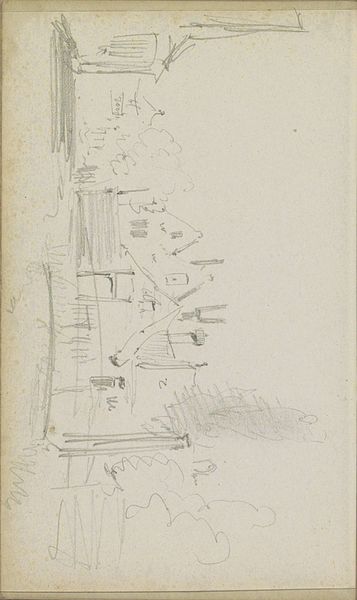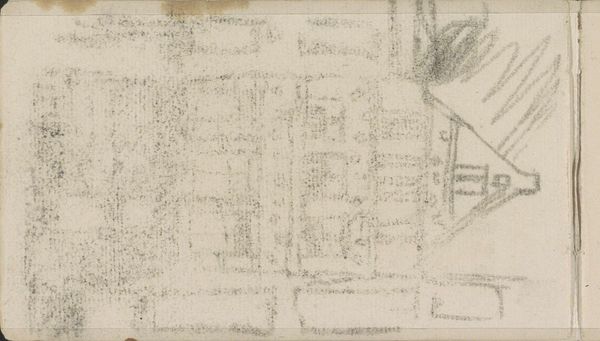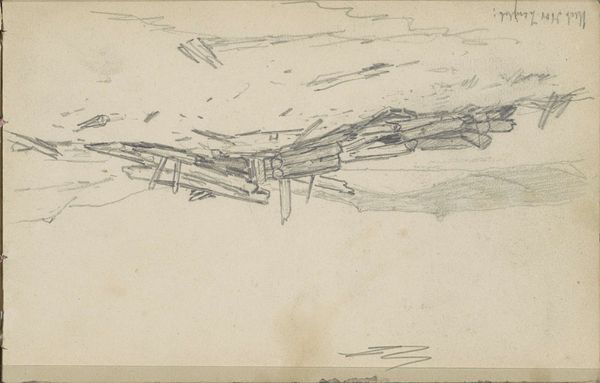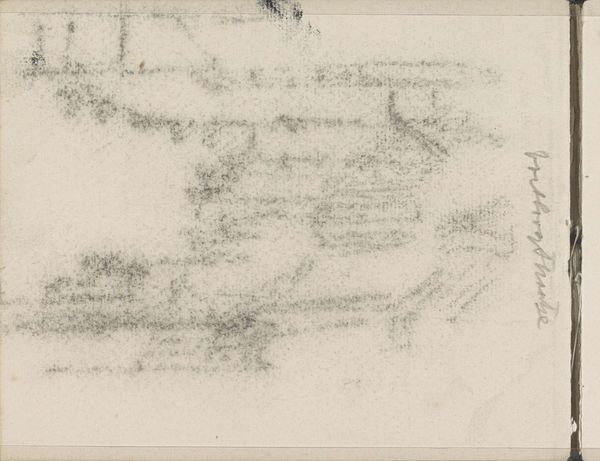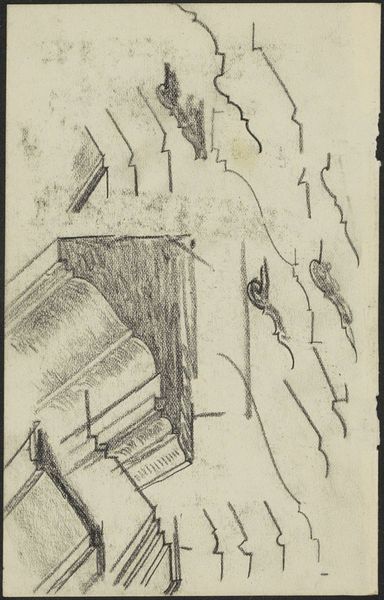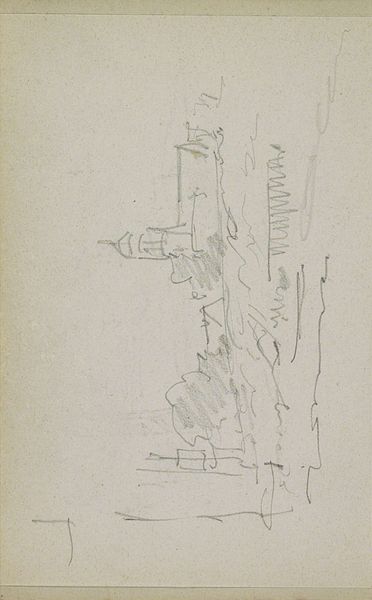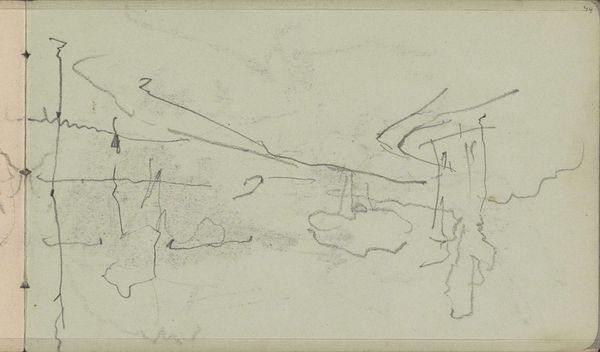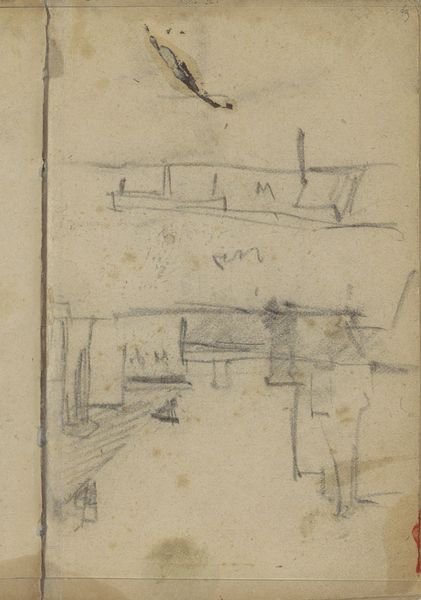
Dimensions: height 103 mm, width 165 mm
Copyright: Rijks Museum: Open Domain
Curator: Oh, this is charming. There’s a fragility, a tenderness, in seeing an artist’s process so bare. Editor: Absolutely. What we have here is “Sections of a Picture Frame” by Gerrit Willem Dijsselhof. It's thought to have been created sometime between 1876 and 1924. Curator: Dijssel…such a melodic name, isn’t it? Anyway, it looks like a peek into his private sketchbook. Sort of reminds you that these grand artistic visions often start with simple scribbles. Editor: Indeed. It is executed in pencil and pen on paper, showcasing various cross-sections and profiles of ornate picture frames. It’s at the Rijksmuseum. Think about the socio-economic conditions in which people were choosing elaborate frames for their paintings – what narratives did these gilded cages tell? Curator: “Gilded cages," yes, lovely. It also reminds me a little bit of doodles, those whimsical, carefree patterns we mindlessly sketch in the margins. Except here, those subconscious lines are being harnessed, refined. He is shaping these unconscious impulses into something functional. Editor: True. Notice how Dijsselhof combines technical precision with a looser, more exploratory line? There are these tentative, almost ghost-like versions sketched above the larger, more defined study. Almost like different historical points represented simultaneously on the same surface, echoing both art history and futurity at once. Curator: Ghostly iterations...that captures it perfectly. It really highlights how even something as seemingly mundane as a frame can be a site of exploration and experimentation. He’s allowing the frame, usually a boundary, to transform and shift. There is some life and whimsy given to such simple details. Editor: Right, and by isolating the frame, Dijsselhof compels us to consider it not just as a border, but as an integral part of the artwork itself, reflecting both its contents and the tastes of the patron. This, of course, raises broader questions about art as commodity, but also decoration as something interwoven with wealth, and social hierarchies. Curator: A rather brilliant exercise of considering the world through the lines of the details, eh? I wonder if he found the perfect frame for his dreams as he experimented? Editor: Maybe. It’s up to us, now, to keep reframing it, generation to generation.
Comments
No comments
Be the first to comment and join the conversation on the ultimate creative platform.
